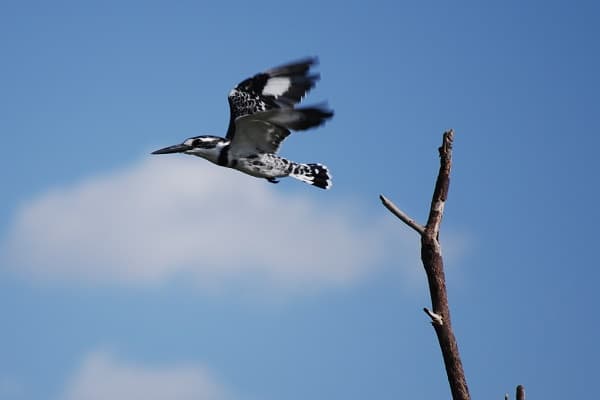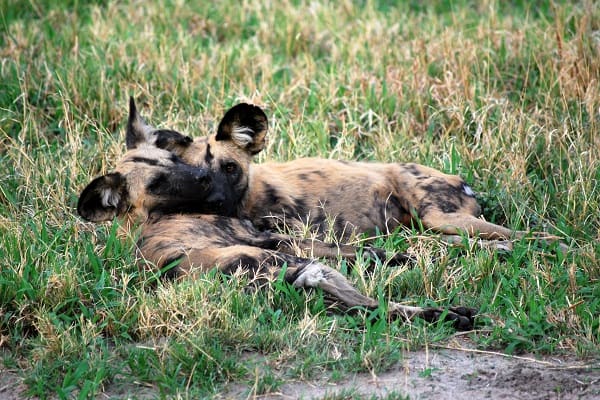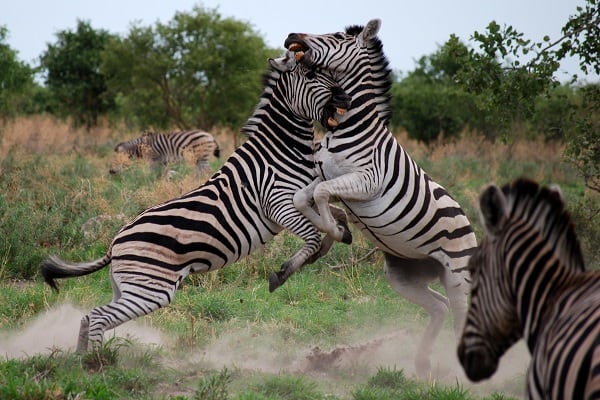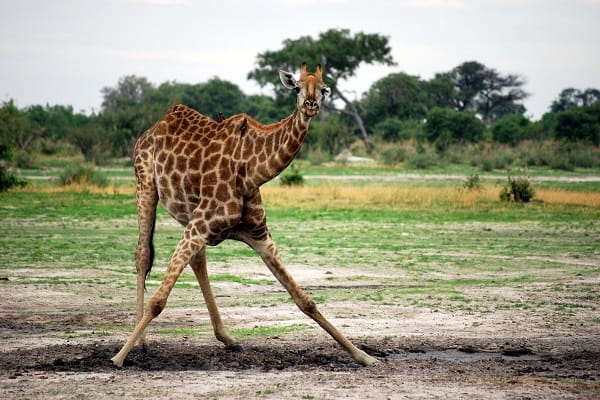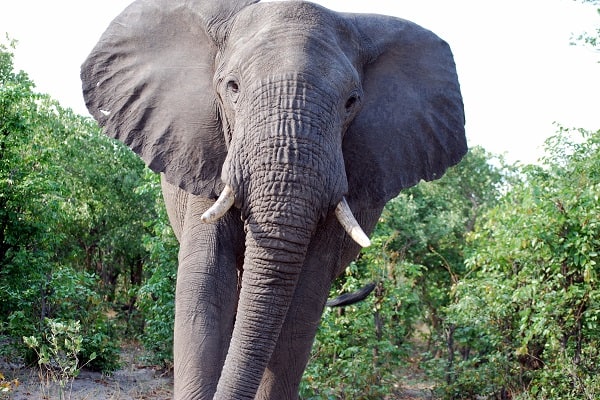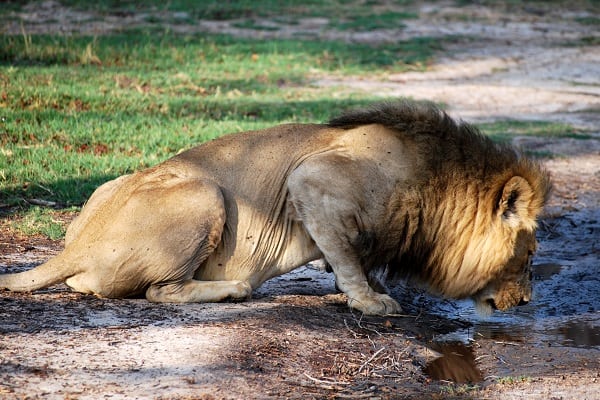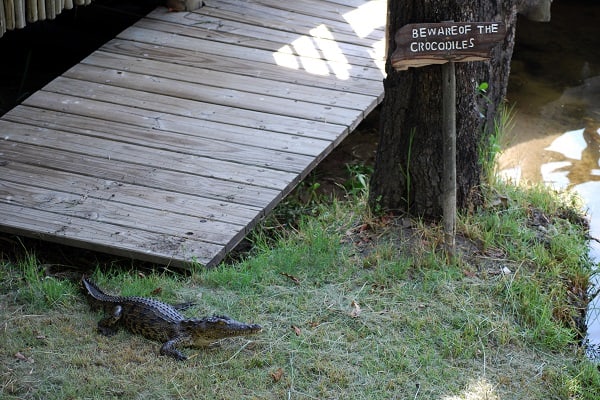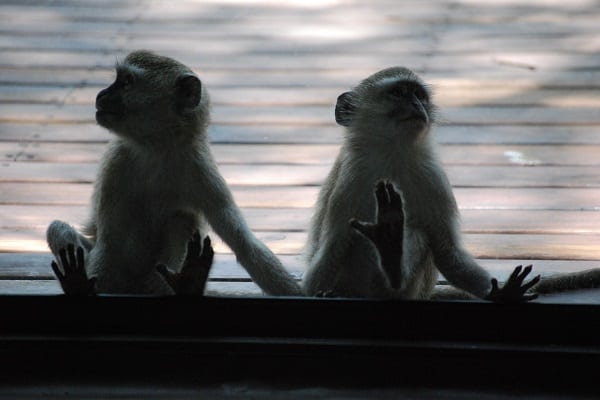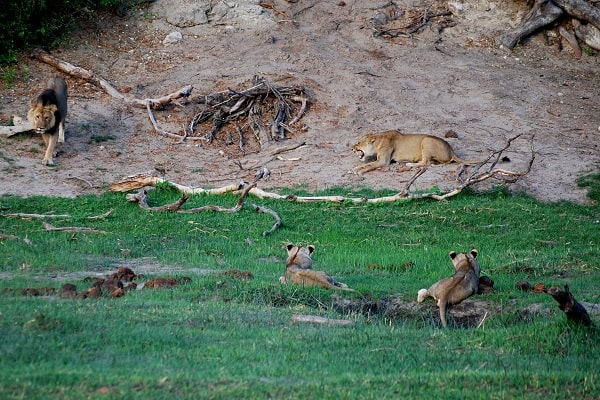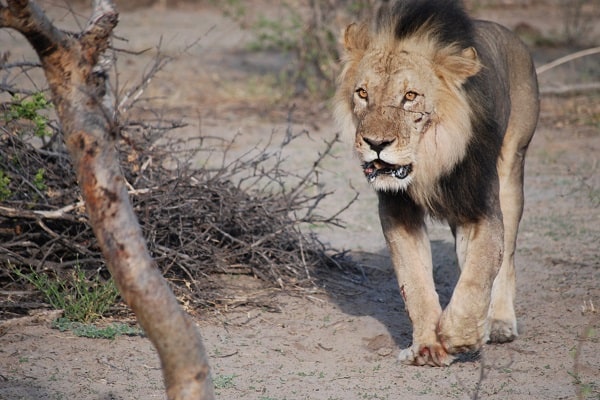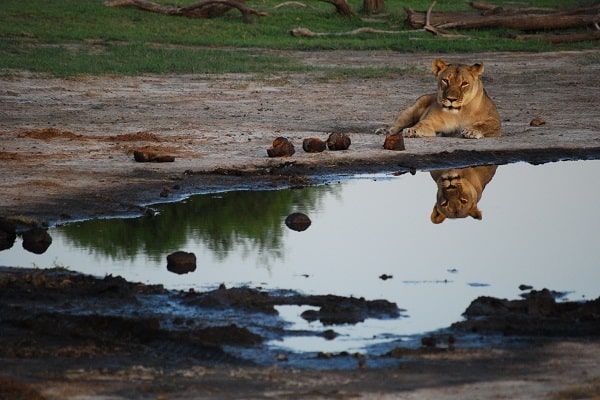Advantages to Traveling in the Botswana Green Season Go Beyond the Price Break
I’m sitting at a swanky cafe that actor Heath Ledger opened just before he succumbed to a deadly cocktail of prescription drugs. It’s a narrow brick building with French bistro tables and a long bar that serves the various needs of the stylish patrons in the epicenter of Brooklyn, NY. I order the Moroccan scramble with a cup of coffee. “We don’t have coffee,” the hipster waiter whines through his bushy mustache, “Would you like an Americano?” “That’s fine,” I say with a sideways smile and a distant sigh. The rhythms of this giant ant colony where millions live on top of each other in a daily grind of survival, where the struggles to pause and appreciate the minutiae of the present moment persist, where choices and cultural complexities overwhelm the senses were all the more potent after returning from the emerald wilderness of Botswana Green Season. Don’t get me wrong, I love an Americano. I love fancy coffee, and I love the finer things that civilization offers. However, I longed to return to the simplicity of waking with the sun’s first glow; to hear the building cacophony of birds, savor a cup of hot coffee from the deck overlooking the lagoons of the Okavango Delta; each day the same rhythms with new surprises unfolding in a saga of life and death.
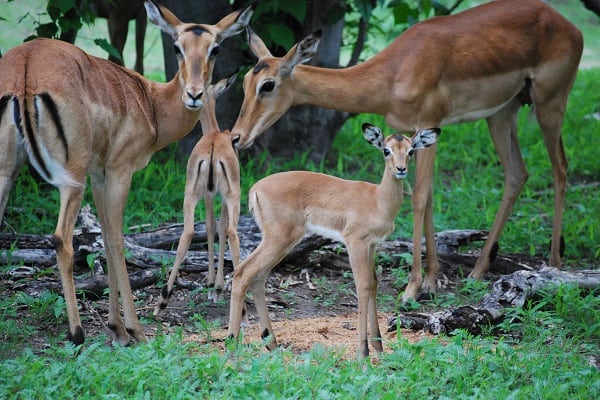
Botswana Green Season Salvation
December is typically a less visited time as the rains arrive for the season. It is characterized by afternoon rainstorms, intermittent blue skies, and stunning sunsets. While it is possible that rain might interrupt a full day the country averages 300 sunny days per year, and while the Okavango Delta appears tropical it sits landlocked by the arid Kalahari Desert. This year, because of El Niño, the rains were almost a month late leaving October and November a brutal, stifling heat that served a death sentence to many animals who failed to reach the last access to water and the lowest water levels the country has seen in decades. All struggled save the vultures.
In Setswana, the word for rain is, “Pula,” which not surprisingly also happens to be the name of the country’s currency. Rain—the gift from the heavens—brings life. As such, the Botswana green season is welcomed both by locals as well as the wildlife, signaling the end of the dry season’s death grip.
We arrived to Botswana a week after the first rains, and like magic the seemingly lifeless branches and dry sand were transformed into green sprouts of acacia, mopane, leadwood, and carpets of green grass. Days-old impala calves huddled in the sanctuary of their nurseries. A lone sable antelope pranced through the grassy hills, galloping and bucking in celebration. With water available away from the rivers, the 20,000-strong herds of elephant disappeared from the river’s edge in search of fresh vegetation. The staccato calls of woodland kingfishers—arriving with the first rains—announce the end of the months of suffering. It is a beautiful time to experience this dynamic wilderness, which has the resiliency to transform one week to the next. While the wildlife volume that attracts so many enthusiasts to Botswana drops in abundance as the rains begin, the subtleties and surprises of the green season are remarkable.
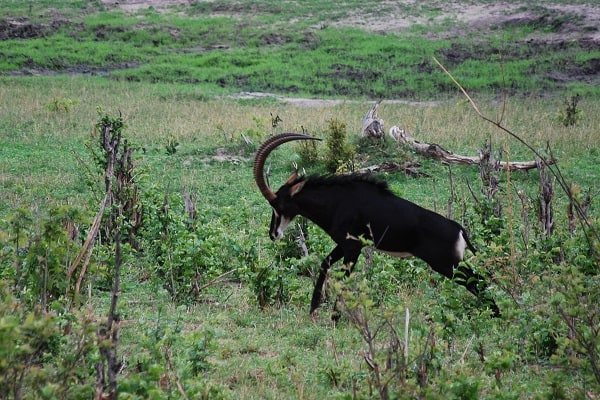
Highlights of Our Green Season Safari
The trip began with Chobe National Park—an area that rivals the size of Switzerland. We stayed along the riverfront at Chobe Game Lodge. From this access point visitors can venture out by game drive or boat without the time limitations imposed on camps who must queue outside the entrance gates. The lodge is also set apart by its sustainability ethos. It features Botswana’s largest grey water treatment plant and is the first lodge to go completely solar powered including converting their boats and vehicles to electric. To keep the permit inside of the national park they must show their efforts to invest in the local communities and in the environment. In doing so Desert and Delta Safaris is well ahead of the curve. Glass bottles are recycled into sand to create bricks that rebuild the lodge and surplus is donated to the nearby villages, biodegradable waste is composted, cubes of aluminum are sent to Tin Collector, they feature the only all-female guide team certainly in all of Botswana and possibly in all of Africa, of the 400 citizen staff they employ they regularly send their most promising to Disney’s hospitality school for further personal development, and every camp is managed by a local Motswana. I came to realize that throughout the trip that Desert and Delta Safaris, which includes Chobe Game Lodge, highlights their staff as a key asset to the company, investing in their personal success not because they have to but because they believe in their people. Albert, the guide for the eco tour, broke ground on Chobe Game Lodge in 1972 and has remained with the company since. The bartender at Savute Safari Lodge has been with the company since 1984.
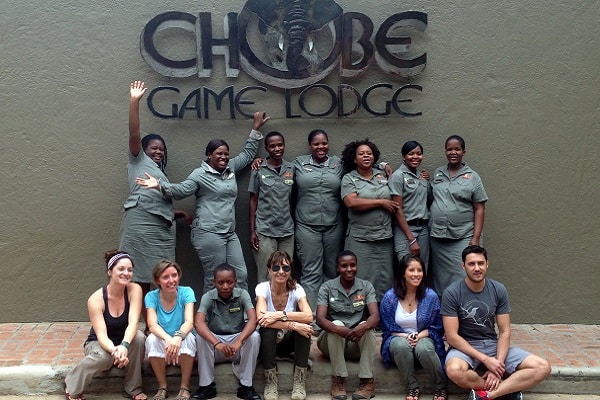
With our lady guides, we ventured out from the lodge by boat, making our way west along the Chobe River, observing troops of baboons on the shoreline, hippos peeking out above the water, and crocodiles basking in the warm sand. We explored the park by safari vehicle, encountering lovely bird species such as the pearl spotted owl as we passed along the riverfront to Serondela on our way to check out a pride of lion who made an attempt at hunting a group of cantankerous old Cape buffalo.
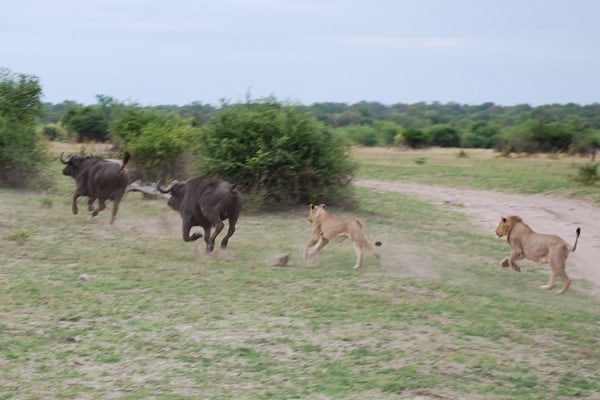
Departing Chobe, we made our way to Savute. On arrival, we were met by our guide, Metal, a longtime resident of Savute and aptly nicknamed, “The Professor,” for his encyclopedic knowledge of the bush. Whether we were learning about the medicinal properties of wild sage, ageing a leopard tortoise by the rings on its shell, or observing the social behavior of wild dogs, Metal had a remarkable gift of making even the most underestimated plant or animal fascinating. Because the rains arrived a week before, we were also witnessing the procession of thousands of zebra on their annual migration from the Linyanti Marshes into Nxai Pan, passing through Savute along the way. Two zebra males viciously battled amongst the herd, entangled in a sinuous display of strength. Further down the road, we encountered a pack of six African wild dogs who were new to the area. They relaxed along the water’s edge before moving into the road ruts for more napping. We chatted with a member of the Natural History Film Unit crew in the process of creating the six part series, Big Game of Thrones, which is being completely filmed inside Savute. This is one of four films produced in recent years featuring the area including Africa’s Fishing Leopards and Africa’s Giant Killers. Returning to camp in the evening, we ate dinner on the deck overlooking spot lit waterholes frequented by elephants. Our gracious hosts from Savute Safari Lodge serenaded us in preparation for our family style dinner, whisking away two of the diners for a private birthday celebration. After dinner, we retired to the campfire and then finally to bed. From my bedroom, I could see the spot lit waterhole that had attracted over ten elephants.
The next morning, we bumped into the film crew again in the spot where he witnessed the same six nomadic wild dogs take down an impala in the early morning hours before anyone else had left camp. Afterwards, we watched a procession of elephant through the grasses, communicating with each other in baritone rumbles and sound waves too low for the human ear to detect.
We returned to the Savute “International” Airstrip for our bush flight into the Okavango Delta, arriving to the Xugana Island Airstrip where we jumped onto a boat for our cruise through the channels to the Xugana Lagoon and Xugana Island Lodge. As we approached the dock, the camp staff greeted us with a wave and offered fresh juice as we climbed onto land. We enjoyed a brunch of eggs to order with fresh vegetables and salads as paradise flycatchers and black-headed orioles hopped through the trees. We then climbed back into the boat for our ride through the narrow channels to Camp Okavango—a complete rebuild scheduled for completion by April 2016. While both Camp Okavango and Xugana Island Lodge boast barefoot comfort, Camp Okavango’s extensive network of platform decking keep visitors suspended in the trees where they can enjoy the breezes, views, and luxury accommodations while Xugana Island Lodge offers a down-to-earth feel with sand between your toes as you walk from bedroom to shoreline. After a very rainy tour of the island—the only rain to impact an activity during our stay, we returned to the boats to head back to Xugana. We took advantage of the low water levels of the Botswana Green Season and found a sandy embankment free of crocodiles for a swim in the Okavango River. The warm water, filtered from grasses along the way through the Delta from Angola, was refreshing and relaxing. We watched as the flocks of black winged pratincole soared overhead arriving for the season from as far as Siberia.
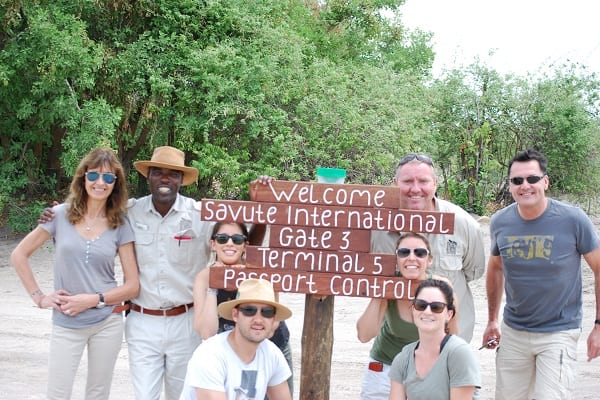
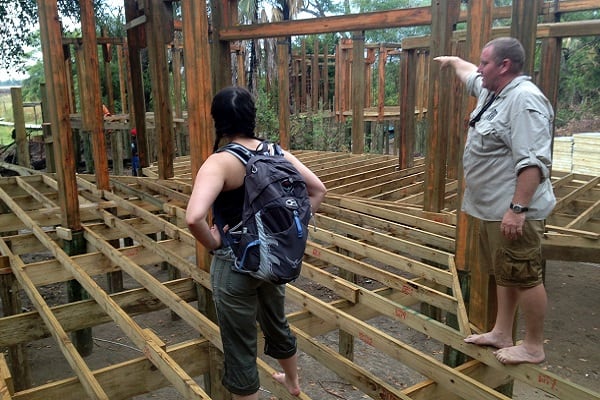
In the evening, after returning to camp, we were surprised by the camp staff with appetizers at sunset from the floating pontoon in the middle of the lagoon. We watched the sun set from across the water, chatting with friends over gin and tonics, and enjoying the sound of the croaking frogs. Arriving back to shore for dinner, once again, the staff serenaded us, and this time with an exceptionally entertaining rendition of frog sounds. The choir created a beat while a particularly athletic young man hopped around croaking like the frogs that sing every night in the lagoon. With a vibrating wail (ululation), the lead chef rallies her chorus into the next song and dance, beckoning us to join as they pass by. We paired off, dancing with a staff member who labored over our dinner to reach the dinner table for our al fresco, lagoon-view evening. It seemed the staff was enjoying their night as much as we were, proud to share their culinary talents and their rich cultural heritage.
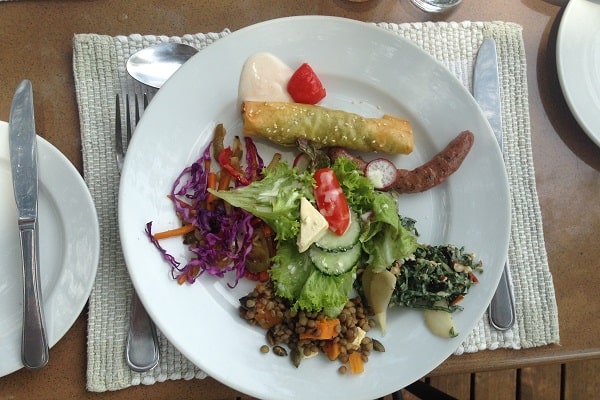
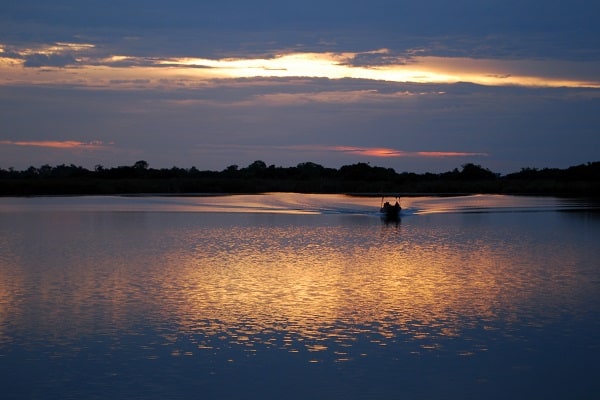
In the morning, we set out by boat through narrow channels to Palm Island for a walking safari with our guide, Allen. In single file, we explored the palm-scattered grasslands, watching the red lechwe lurk through the grasses, backs angled from their oversized, powerful hindquarters. We climbed onto termite mounds for better views of grazing elephants and played with the honeycomb-structured skull of a Cape buffalo. Allen explained the medicinal uses of milkweed which contains natural coagulants, the opposing qualities of euphorbia, and why elephant droppings are used as a cure-all. We continued walking until Allen was radioed by our other group who spotted a male lion in the distance. Upon further investigation, we discovered the hippo kill and the rest of the pride engorged in their bounty. The excitement of seeing them on foot is indescribable and guaranteed to raise your heart rate. We approached with caution and maintained distance from a hilly vantage point to keep an eye on their movements. The pride was satiated, and so began their mid-day siesta.
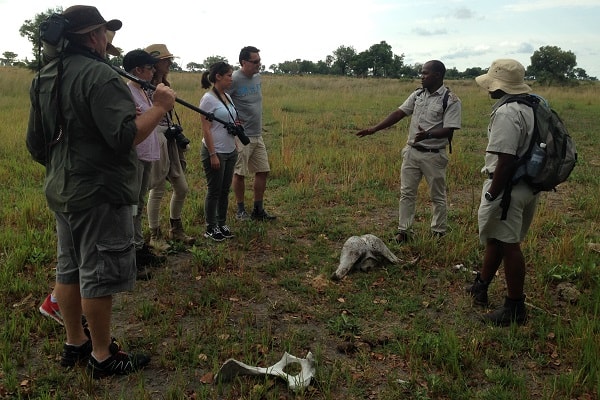
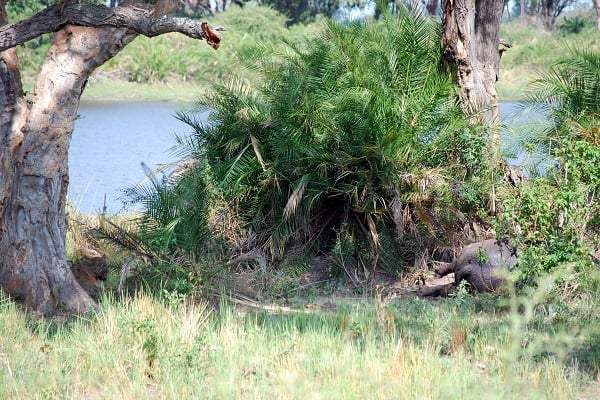
A beautiful ten-minute bush flight from the Xugana Airstrip dropped us into the heart of the Moremi Game Reserve. From the plane, we could see elephants, hippos, and the waterways surrounded by greenbelts that slowly fade into savannah. After landing at the airstrip, we passed kudu, impala, zebra, and bushbuck before reaching camp. On arrival, we enjoyed a delicious lunch of chicken avocado bake, curried chickpeas, and fresh salad. We then continued to Camp Xaxanaxa for a quick visit, an impromptu cannonball competition in the pool, and a detailed explanation of the hilariously destructive nature of baboons before the camp hired a full-time baboon lookout. Back at Camp Moremi, vervet monkeys curiously pressed themselves against the windows of my room, peering in as I freshened up for the evening game drive. We explored the area with the hopes of finding leopard. While the evening drive was quiet, we succeeded in finding a skittish leopard and a couple more lions in the morning.
Our final stop was Leroo la Tau, meaning “spoor (print) of the lion.” Situated on the banks of the Boteti River, the area is a major wildlife corridor and provides one of the few permanent water access points in the Makgadikgadi Pans. This makes it one of the better places to visit during the dry season, but the desert regions are truly spectacular in the Botswana Green Season where they are more hospitable. The best way to beat the mid-day heat at Leroo la Tau is to sit in the hide to observe the animals that come to drink, enjoy a dip in the pool, or enjoy a mid-day nap. Once the heat breaks, it is out on the safari vehicle to cruise the riverfront. Hippos, sparring elephants, giraffes, zebra, kudu, and more all make their way to the river to quench their thirst. On the hill’s crest, we encountered two male lions—one with a dark black mane and the other with golden locks. They were accompanied by two females, one of whom was lactating but had been mating with the golden maned-male for the last week. Presumably, her cubs were killed otherwise she would not be in estrus. The second female was doing her best to reject the advances of the dark maned male. She had three cubs–two males who were casually nearby and a missing female. The dark maned male continued to try and separate the female from her cubs while she balanced aggression and submission to keep him away. Surprisingly, he is believed to be the father of the cubs, and as such the young boys had likely never witnessed this behavior before. His instinct to procreate while he is still young was overtaking him, and the lioness was desperately keeping them separated, perhaps with heightened protection after the death of the other cubs. This continued from the top of the ridge to the river below. In the distance, the young female leapt across the river scattering giraffe in her wake. The guides presumed that because the females haven’t had an opportunity to hunt for them yet she may have tried to find food for herself.
Late in the evening, we left them to make our way back to camp. In the distance, we could see a bonfire in the grassy riverbank; nearby, a cocktail bar with chairs encircled by the game vehicles. We chatted around the campfire watching the beginning of the flight of the termites—an event triggered by rains as the females leave their colony to find a mate and create a new one. The termites are harvested and eaten year-round by the locals, many of whom enthusiastically claim it as their favorite food. The flight of the termites is a day of celebration in Botswana, and so I consider it a blessing to the end of our trip. From the fire, we could see the termites building in the coals, attracted by the light. Wings had dropped to the ground as they succeeded in their mission.
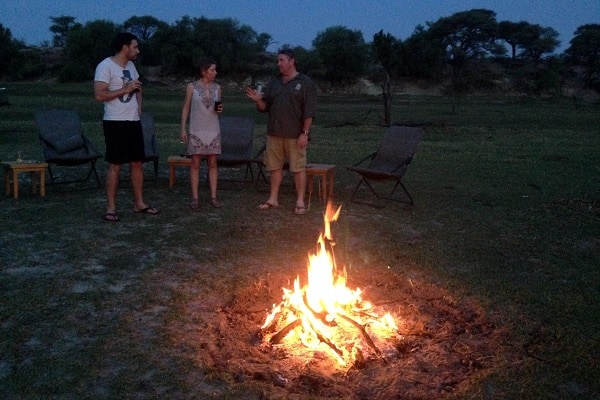
From the campfire, we continued towards dinner. The camp surprised us with a beautiful bush dinner decorated with soft lit lanterns and beautiful table setting. In the distance, in rows of two, the staff entered clapping and marching rhythmically as they approached our dinner table. We were encircled by the singers, every single staff member from Leroo la Tau was accounted for. Some wore their chef hats with white robes while others in casual shirts and jeans. It didn’t feel like a performance, but rather a celebration. They gathered us from our chairs, and while we didn’t know the words we learned the dance moves as we circled the dinner table. At the end of the song, we were seated for dinner. It was a beautiful night filled with new friends, delicious food, and clear starry skies.
In the morning, we found the spoor of honeybadger, brown hyena, and the lions but we were not able to track them down. Without fail, safari leaves loose endings that will inevitably fuel one’s hunger to return, and this was no exception.
